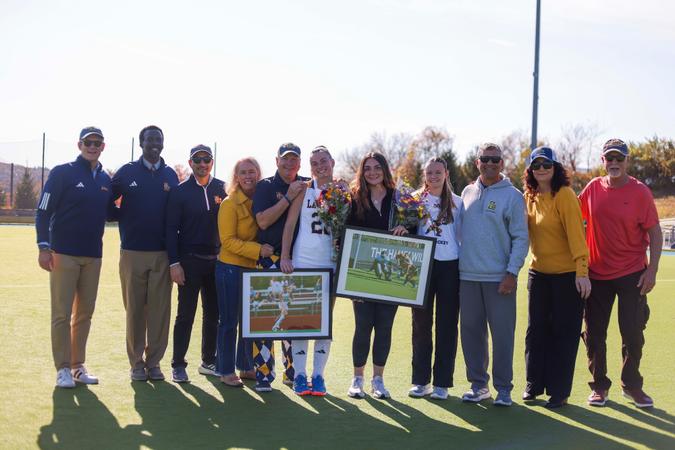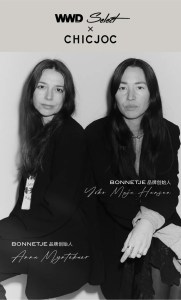ST. CHARLES, Mo. – SIUE women’s soccer’s postseason…

ST. CHARLES, Mo. – SIUE women’s soccer’s postseason…

An extinct species of rhino that lived inside the Arctic Circle 23 million years ago has been discovered.
The…

Paramount and Constantin Films’ romance-drama Regretting You — the second Colleen Hoover book adaptation to hit the big screen after It Ends With Us — is proclaiming itself the victor of this year’s Halloween box office…

Dave Franco acknowledges that he did benefit from a nepo-sibling situation when it came to his career, but that it wasn’t the only reason for his success in Hollywood.
While the actor has gone on to make a name for himself, he recalls…

In a pivotal moment for open-source computing enthusiasts, Linux has finally surpassed the 3% threshold among Steam users, marking a significant milestone in the platform’s hardware and software survey for October 2025. According to…

Conshohocken, PA – William & Mary outlasted La Salle…

The global AI market could reach $4.8 trillion by 2033, meaning companies like OpenAI and Microsoft stand to rake in hefty profits.
Some people are already cashing in on the increasingly ubiquitous tech, including 17-year-old Samik Sidhu of Virginia. While running two businesses — an Etsy apparel shop and a for-profit networking community — in 2024, he began investing the profits from those ventures in stocks of tech companies.
“Rather than having my money sit in an account, it was able to work for me,” Sidhu said.
Sidhu earned $37,400 by selling graphic T-shirts and other items through his Etsy shop, while the networking community amassed around $28,000. After investing around $53,100 across four companies — Nvidia, AMD, C3.ai, and SMCI — between February and May 2024, Sidhu managed to earn about $72,700. Business Insider verified the related documents.
Sidhu told Business Insider that he had a “good feeling” about investing in companies that were involved in the AI industry.
Smith Collection/Gado/Getty Images
“I caught the AI wave at the perfect time,” Sidhu said.
Although Sidhu said he wasn’t “super big” into AI, incorporating the technology into his former e-commerce business operations helped boost efficiency.
“AI helped me with branding, naming my stores, logos, color themes, niches, demographics, all that stuff,” Sidhu said. “I had confidence that over time it would only get better and better. I have literally seen the progression of AI since 2020.”
Demand for AI technology has increased over the years, but it received a significant boost during the COVID-19 pandemic, when businesses sought to streamline operations amid shrinking budgets and remote workforces. The general public became more familiar with AI through OpenAI’s ChatGPT, a chatbot powered by a large language model. Since then, Big Tech companies like Microsoft, Apple, and Google have been racing to lead the industry.
Sidhu said he has since expanded his portfolio to include companies featured in the S&P 500, such as Apple, Microsoft, and Google.
Sidhu told Business Insider that seeing other young folks find success through e-commerce businesses sparked his entrepreneurial spirit. Since 2022, he said he has pursued various ventures, including dropshipping, flipping clothes, social media theme pages, and a print-on-demand service.
Obstacles, such as low sales or high fulfillment costs, prompted him to shutter those businesses, forcing him to reassess his approach.
“I went from business model to business model and had doubts like, ‘Oh, am I just too optimistic?’ But then again, I told myself I’ll get learning experience out of it,” Sidhu said. “I might not make money right now, but with the skills that I’m building up over my first few business ventures, one day I guarantee they’ll come in use.”
That turned out to be true in early 2024, when he set his sights on Etsy. Unlike social media, where algorithms can be tricky to read and attracting customers may feel unpredictable, Sidhu believed Etsy held promise.
“I saw it as a platform with built-in traffic and potential organic traffic, so I started uploading listings slowly,” he said.
Thomas Trutschel/Photothek via Getty Images
Sidhu launched his apparel shop in January, but closed it down in May.
“Most of my customers were happy, but the occasional customer would not receive their order or experience delayed shipping,” he said. “I didn’t really want to deal with that.”
Around that same time, in March 2024, Sidhu decided to try digital products. He said he used Signal, the encrypted messaging app, to create a networking community.
“I built a private paid Signal community where I taught teens and young adults how to get started with e-commerce,” Sidhu said. “The main focus of the community was print on demand, and how to research niches, set up stores, learn from competitors, design, and fulfill products on platforms like Shopify.”
For example, people could purchase an e-book with advice and tips for $50, or enlist Sidhu’s help in developing their company’s branding for $150. Sales for his digital products peaked in April before slowing down in May, prompting him to close the group soon after.
Being a young entrepreneur comes with its own set of challenges, such as juggling school and business or not being old enough to access certain accounts. Sidhu said the key to success is finding stability within those challenges.
“The biggest tip I would say is to pick one thing and stay consistent with it. Stay dedicated, stay disciplined, and have a schedule for it,” Sidhu said. “If you’re diving into a new business venture, know exactly what you need to get done. Know your timelines. Be strict with yourself about those timelines.”
Being persistent is also key.
“You’re going to have to adapt to a lot of different challenges that come up, and there’s always competition out there,” Sidhu said.”There’s always someone who has 10 times the amount of experience you do, who’s double your age, and has been doing it for most of their life. You need to stay consistent. Otherwise, you don’t stand a chance.”

Vertiv recently announced its gigawatt-scale reference architectures for the NVIDIA Omniverse DSX Blueprint, enabling faster and more flexible AI factory deployments across platforms such as NVIDIA Vera Rubin, and offering solutions like prefabricated, hybrid, and traditional data center builds.
This collaboration features extensive integration of Vertiv’s advanced liquid cooling, power management, and digital twin capabilities, establishing the company as a core enabler of next-generation generative AI infrastructure expansion.
We’ll now examine how Vertiv’s AI infrastructure partnership and innovation could reshape its growth and competitive outlook going forward.
Find companies with promising cash flow potential yet trading below their fair value.
Owning Vertiv Holdings Co means believing in sustained demand for AI-optimized data centers and the company’s ability to deliver integrated power and cooling solutions at scale. The latest NVIDIA-related product launch reinforces Vertiv’s role as an AI infrastructure enabler, likely supporting near-term demand momentum, the main catalyst for the stock, while direct competition and margin pressures from supply chain disruptions remain the primary short-term risks to watch; the overall impact of this announcement on those risks appears limited.
The recent Q3 2025 earnings report stands out, underscoring the same strong AI-driven demand seen in the NVIDIA partnership update. The company’s robust 29% revenue growth and raised full-year sales guidance tie directly into expectations for rapid AI data center expansion, providing useful context for how product innovation and execution remain critical for converting demand into financial results.
However, it is just as important to recognize that, in contrast, margin expansion is still at risk if supply chain and cost inefficiencies persist…
Read the full narrative on Vertiv Holdings Co (it’s free!)
Vertiv Holdings Co’s narrative projects $13.9 billion revenue and $2.3 billion earnings by 2028. This requires 15.2% yearly revenue growth and an increase in earnings of approximately $1.5 billion from the current $812.3 million.
Uncover how Vertiv Holdings Co’s forecasts yield a $173.11 fair value, a 10% downside to its current price.
Simply Wall St Community members estimate Vertiv’s fair value between US$123.78 and US$177.94, with 12 individual views represented. This diversity comes as global demand for AI data centers accelerates, but execution and competitive pressure could shape very different outcomes, review their opinions to see every angle.

After two intense months of back-to-back tests during China’s “Golden September and Silver October” retail peak, local fashion players are redefining how to balance globalization and localization, narrative and conversion.
For much of the past decade, China’s apparel industry has been dominated by a “scale-first” mentality. Speed was the weapon; size, the defense. Brands raced to expand through new stores and soaring stock keeping units — using quantity as the main measure of success.
That strategy worked in an era of rapid economic growth. But as China’s market matures and competition shifts from expansion to retention, the marginal benefits of scale have sharply declined. Digitalization has also transformed the landscape: in an age of endless scrolling and information overload, attention has become the rarest currency.
To hold that attention — and convert it — brands have moved beyond pure product play, embracing aesthetics, culture, and ideology. Fashion weeks have emerged as the ultimate stage for that expression: a place where high-end image building meets global dialogue. Yet once the applause fades, brands must return to the commercial frontlines — livestream rooms, social commerce platforms, and Singles’ Day.
This season, many of China’s rising stars did exactly that — flying from Paris back to Shanghai overnight, shifting seamlessly from runway storytelling to retail strategy.
As Chinese brands evolve from chasing scale to shaping meaning, global fashion weeks have become essential to building emotional resonance. But unlike in the past, Chinese designers are no longer just seeking validation abroad — they’re creating cultural conversations that speak to global and local audiences.
Icicle returned to Paris with its spring 2026 Artisan Series, themed “Beyond the Window.” Through fluid fabrics, natural textures, and hues inspired by China’s traditional five-color philosophy, the collection explored the balance between transparency and freedom — a continuation of the brand’s humanist and ecological roots.
A look from Icicle’s spring 2026 collection.
SongMont, the first Chinese luggage label to exhibit at Paris Fashion Week for two consecutive years, translated the spirit of China’s Central Plains into a multisensory experience. Its “Song of Mont” exhibition incorporated heritage stone carvings, architectural silhouettes, and Silk Road-inspired design details — a dialogue between ancient craftsmanship and contemporary form.

Songmont was the first Chinese luggage label to exhibit during Paris Fashion Week in two consecutive years.
For Keigan, founded by a team that includes an architect, the goal was to redefine what a fashion brand can represent. Its Keigan Genius Salon revived the intimate cross-disciplinary gatherings of 18th-century Europe — bringing together designers, artists and cultural figures to explore the intersection of fashion, architecture and art. Following its Paris debut, Keigan opened its first flagship store in a historic building on Shanghai’s West Nanjing Road, symbolizing its commitment to aesthetic co-creation.
Meanwhile, Chicjoc, through the WWD China Select program, bridged global and Chinese creativity in Milan with “Heritage Next: Glowing Milano.” The exhibition, part of Milan Fashion Week’s official calendar, connected emerging international designers with Chinese retail expertise and consumer insights — transforming cultural exchange into commercial opportunity.
Together, these initiatives revealed a shared ambition: to merge cultural identity with international relevance, and to convert global visibility into sustainable growth back home.
As the spotlights of global fashion weeks dimmed, a different kind of spotlight came on in China: Singles’ Day. For many brands, it was the next major test of their ability to turn storytelling into sales.
The 2025 Singles’ Day presale began Oct. 15, with down payments starting Oct. 21. Within hours, domestic players dominated key categories. On Tmall, two brands under Anta Group took the top two positions in sports and outdoor sales, surpassing long-time leader Nike. In beauty, Chinese brands such as Chando, Proya and Maogepingalso continued their upward trajectory, outpacing many international names.
For fashion brands returning from global stages, Singles’ Day was more than a shopping festival — it was a test of monetizing cultural momentum. Chicjoc, for example, built on last year’s success, where its live show with Taobao Apparel generated more than 64.2 million yuan (about $9 million) in a single day. This year, the brand partnered again with Taobao Apparel to host the 2.0 Super Fashion Launch, featuring emerging Danish designers Freya Dalsjø and Bonnetje, both part of the WWD China Select program.

Bonnetje founders Anna Myntekær (left) and Yoko Maja Hansen (right).
In an era where aesthetics are the ultimate differentiator, brands can no longer rely solely on price or speed. The new formula is a closed loop of aesthetics — engagement — conversion.
Cultural storytelling builds awareness; engagement sustains relevance, and strategic digital integration turns influence into sales. The synergy between fashion weeks and Singles’ Day — between high fashion and high traffic — is becoming the hallmark of China’s next-generation brand strategy.
As the boundaries between global prestige and domestic performance blur, 2026 will likely see deeper integration between international fashion calendars and China’s digital economy. True globalization, after all, means more than showing abroad — it means transforming global fascination with Oriental aesthetics into genuine consumer connection and tangible growth.
Editor’s Note: China Insight is a monthly column from WWD’s sister publication WWD China on trends and developments in that all-important market.